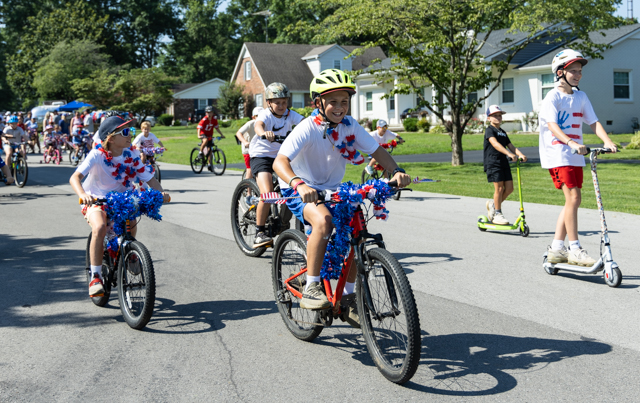Neighborhood improvement project moving into second year
Published 4:46 pm Saturday, December 3, 2016
The first project in a new approach by the city of Bowling Green to community redevelopment is entering its second year with many projects completed, but a substantial portion is slated for completion in 2017.
The effort is called a Neighborhood Improvement Plan and is modeled on similar programs in Owensboro and other cities, according to city Neighborhood and Community Services Director Brent Childers. An NIP entails taking entire neighborhoods and, based on need, tackling a wide variety of improvements at once.
The program has been in the works since 2013 but kicked off early this year in an area around Reservoir Hill toward the Western Kentucky University campus. It encompasses Chestnut Street to U.S. 31-W By-Pass and Fairview Avenue to 14th Avenue. It includes about 826 housing units.
The first step in the NIP process was to look at neighborhood demographics – low-income residents, minority populations, etc. – to identify target revitalization areas and then develop a comprehensive plan based on area needs. The city has identified about 10 areas clustered around downtown for the program.
The funding – about $875,000 for the first NIP project – comes from a mix of dollars from the city’s general fund and from federal Community Development Block Grant funds through the Department of Housing and Urban Development.
So far in the NIP area, new trash cans have been placed, 20 new decorative sign posts have been erected, with four more on the way, and hundreds of feet of sidewalk have been repaired or built.
“Rather than just building sidewalks, we looked at areas in need of repair,” Childers said. “Some were as small as 4-foot sections, some as long as 120 feet.”
One area that got both new sidewalks and repairs was Josephine Street. The sidewalk projects there have established a pedestrian path in the neighborhood to U.S. 31-W By-Pass and Lehman Avenue, the site of much new retail development.
Numerous other projects are in various stages of completion.
Atop Reservoir Hill, new walking trails have been marked out and planning is in progress for a new roof for the park shelter, as well as wall repairs, adding parking, building a new transit shelter and other work.
One project that was not in the original NIP but has developed from talking to area residents was to change the configuration of the “Y” intersection at East 10th Avenue and Cherry Drive. The alignment of the streets causes confusion for drivers and difficulty seeing oncoming traffic approaching from the top of Reservoir Hill on East 10th, Childers said. The city plans to make it a “T” intersection with the new section of road between where the two forks of the “Y” currently are.
The land needed is already city owned, Childers said. Construction is expected to be $35,000 to $40,000.
One of the biggest part of the NIP effort is private property improvements, where funds will be provided to do various beautification projects on privately owned properties.
The guidelines for that part of the program are still in draft form. Developing the guidelines to accommodate all the state and federal regulations was a six-month project, Childers said. For example, because the majority of the homes in the area are more than 50 years old, most projects will need state approval.
“We want to make sure we have the process down” first, Childers said, before accepting applications for the projects, which can include things such as painting, roofing, porch repairs and tree removal.
There’s a $5,000 limit on projects, and landlords or businesses are required to provide a match. For landlords, it’s a 20 percent match, so to get $5,000 in funding, they have to provide $1,250. Businesses have to provide a 50/50 match, so to get the full $5,000, they must also spend $5,000. There’s no match requirement for individual homeowners.
The city is planning to do about 90 such private property projects in the NIP area.
Once the city is ready to unveil the guidelines and the application documents – probably early next year – they will be posted on the city’s social media platforms and information will be sent to all property owners in the district.
Now entering the second year of the execution phase of the NIP, Childers said what was unexpected was the effort it would take to navigate all the state and federal requirements.
“It takes a lot longer to do things than we thought,” he said.
But with the first NIP project moving toward completion despite the obstacles, the city is already preparing to move on to the next area.
Childers said the city has targeted the next neighborhood for the program, but it won’t be publicly unveiled until early next year. Projects in that neighborhood will be tailored for the needs there, Childers said.
— Follow Daily News city government reporter Wes Swietek on Twitter at twitter.com/BGDNgovtbeat or visit bgdailynews.com.






